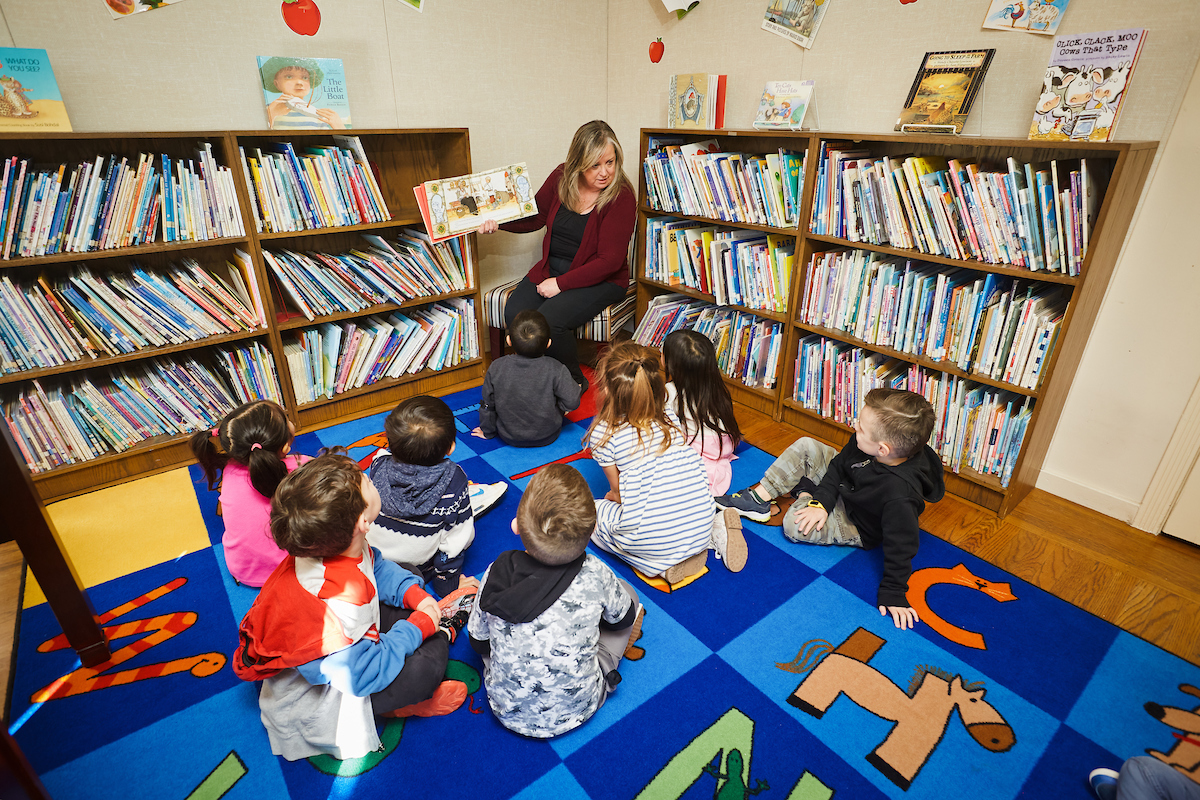
Kindergarten marks a big milestone—for children and their families. But how do you know if your child is truly ready to begin this new chapter?
Whether you’re a parent in San Ramon, Alamo, or the broader East Bay, chances are you’ve asked yourself this exact question: Is my child ready for kindergarten? It’s a thoughtful, important question—and the answer goes beyond just age.
At The Dorris-Eaton School, we’ve guided families through this moment for decades. Here’s how to think about kindergarten readiness in a way that’s grounded, holistic, and focused on helping your child thrive from day one.

Dorris-Eaton T.K. class in Alamo, CA
Understanding Readiness: It’s More Than a Birthdate
Many schools use a specific cut-off date to determine eligibility for kindergarten—often requiring that a child turn five by a certain month. While age is a factor, it shouldn’t be the only factor.
Readiness is a combination of developmental milestones across four key areas:
- Social and emotional development
- Communication and academic curiosity
- Fine and gross motor skills
- Independence and self-regulation
These benchmarks align with the same whole-child approach that underpins our early childhood philosophy, which emphasizes balancing emotional confidence and cognitive growth.
Social and Emotional Development: Can Your Child Navigate the Day?
The kindergarten classroom is more than just a place to learn ABCs and 123s—it’s a community–a home away from home. That’s why social and emotional readiness matters.
Ask yourself:
- Is your child able to separate from you without prolonged distress?
- Is he/she able to share, take turns, and work through small conflicts with peers?
- Does he/she express feelings with words?
- Is your child able to follow classroom routines without constant prompting?
These skills lay the foundation for lifelong collaboration, empathy, and teamwork—core values woven into our early childhood approach that help young learners thrive from day one.
Communication and Curiosity: Is Your Child Eager to Learn?
Does your child love asking questions? Does he/she chatter about what is seen, heard, and imagined?
Signs of strong academic readiness include:
- Speaking in full sentences
- Following two-step directions
- Listening attentively to stories
- Retelling events or story details in their own words
Recognizing letters and numbers
- Showing early understanding of quantity (more vs. less, bigger vs. smaller, etc.)
Students who demonstrate early curiosity often flourish in our language-rich Junior Kindergarten program, where foundational literacy skills are developed through storytelling, phonics, and conversation—not rote memorization.
Later on, those strong communication roots feed into deeper thinking in areas like English grammar and writing mechanics.
Motor Skills: Is Your Child Ready to Play, Create, and Participate?
From cutting with scissors to climbing on the playground, kindergarten involves both fine and gross motor development.
Here’s what to look for:
Fine motor readiness:
- Are crayons, pencils, or markers used with control?
- Does your child try to copy shapes like lines, circles, or triangles?
- Is he/she able to draw a basic person? Does your child’s figure have a head, arms, and legs?
Gross motor readiness:
- Is your child able to hop on one foot? Bounce, catch, and throw a ball? Run in a straight line?
Motor coordination plays a surprising role in learning. For instance, students who develop pencil grip and visual-motor skills early often experience fewer barriers in subjects like early writing and math readiness, where precision and focus are key.
Independence: Is Your Child Comfortable Doing Things Without Your Help?
Kindergarteners aren’t expected to do everything perfectly—but they should show early signs of independence.
Helpful indicators include:
- Taking care of their belongings
- Dressing themselves (zippers, jackets, shoes)
- Washing their hands without reminders
- Asking for help when needed
These habits ease the transition into more structured days. For families looking to build these routines ahead of time, our enrichment-based Summer Programs are a gentle way to prepare without pressure—especially for first-time students adjusting to daily schedules.
Still Wondering, “Is My Child Ready for Kindergarten?”
Even with these benchmarks, it’s normal to feel uncertain. No checklist can replace your unique knowledge of your child.
That’s why we encourage families to talk with experienced educators. Teachers, childcare providers, and trusted adults who know your child well can offer helpful, objective perspectives.
You can also explore our San Ramon K–8 campus—where each program is designed to foster curiosity by meeting students where they are and nurturing their development.
We’ve helped countless families make the kindergarten decision with confidence, knowing their child will thrive in a nurturing, structured setting that honors each learner’s unique path.
Final Thought: Readiness is a Journey—Not a Deadline
Children develop on their own timeline. Readiness isn’t about perfection—it’s about showing the signs of being ready to grow.
If your child is curious, expressive, and beginning to manage their emotions and routines, you’re on the right track.
Curious how we nurture confidence and curiosity in the classroom? Schedule a personal tour or you can also explore our story to see how over 70 years of proven academic results still begin with one question: Is my child ready?



